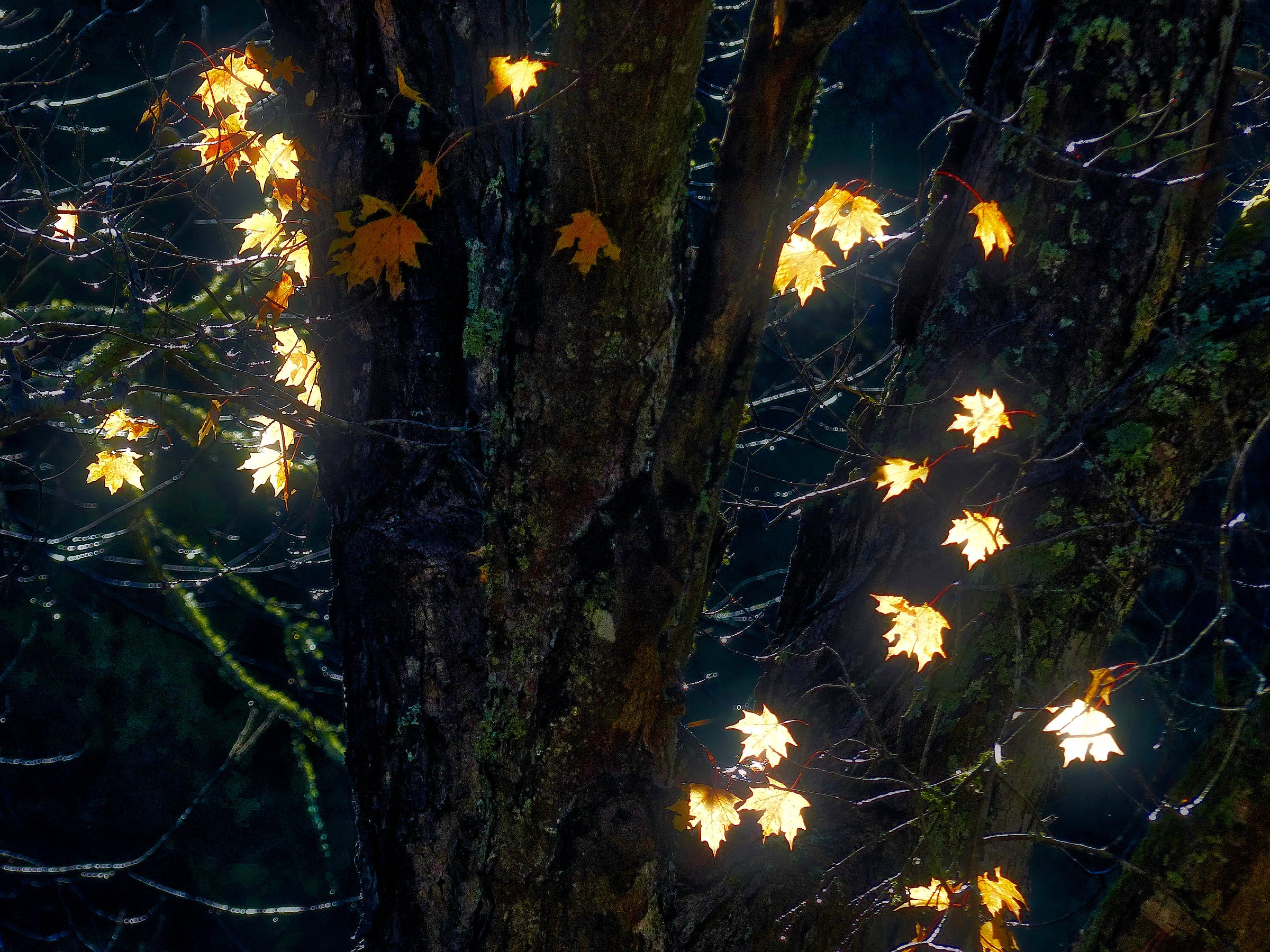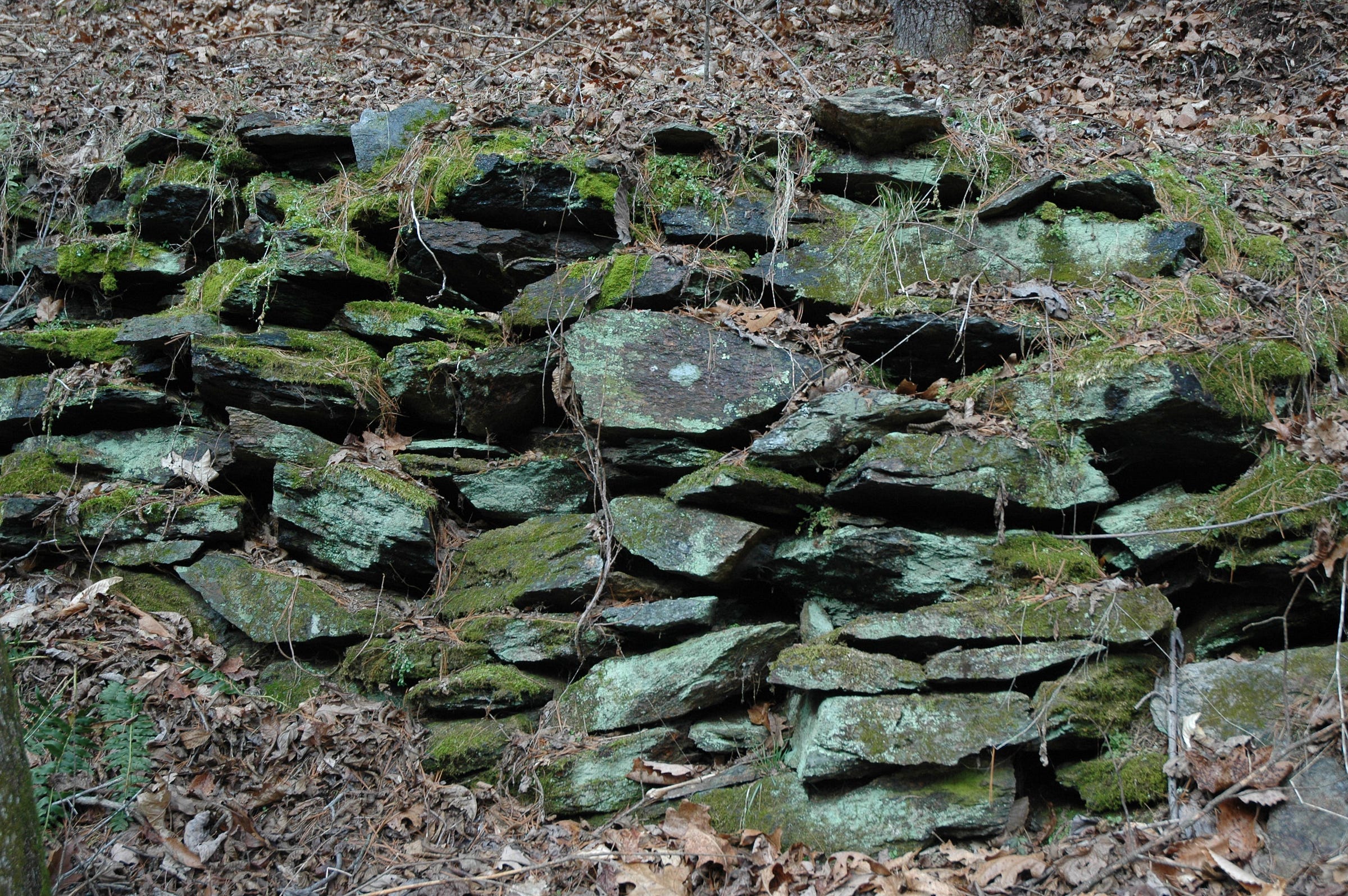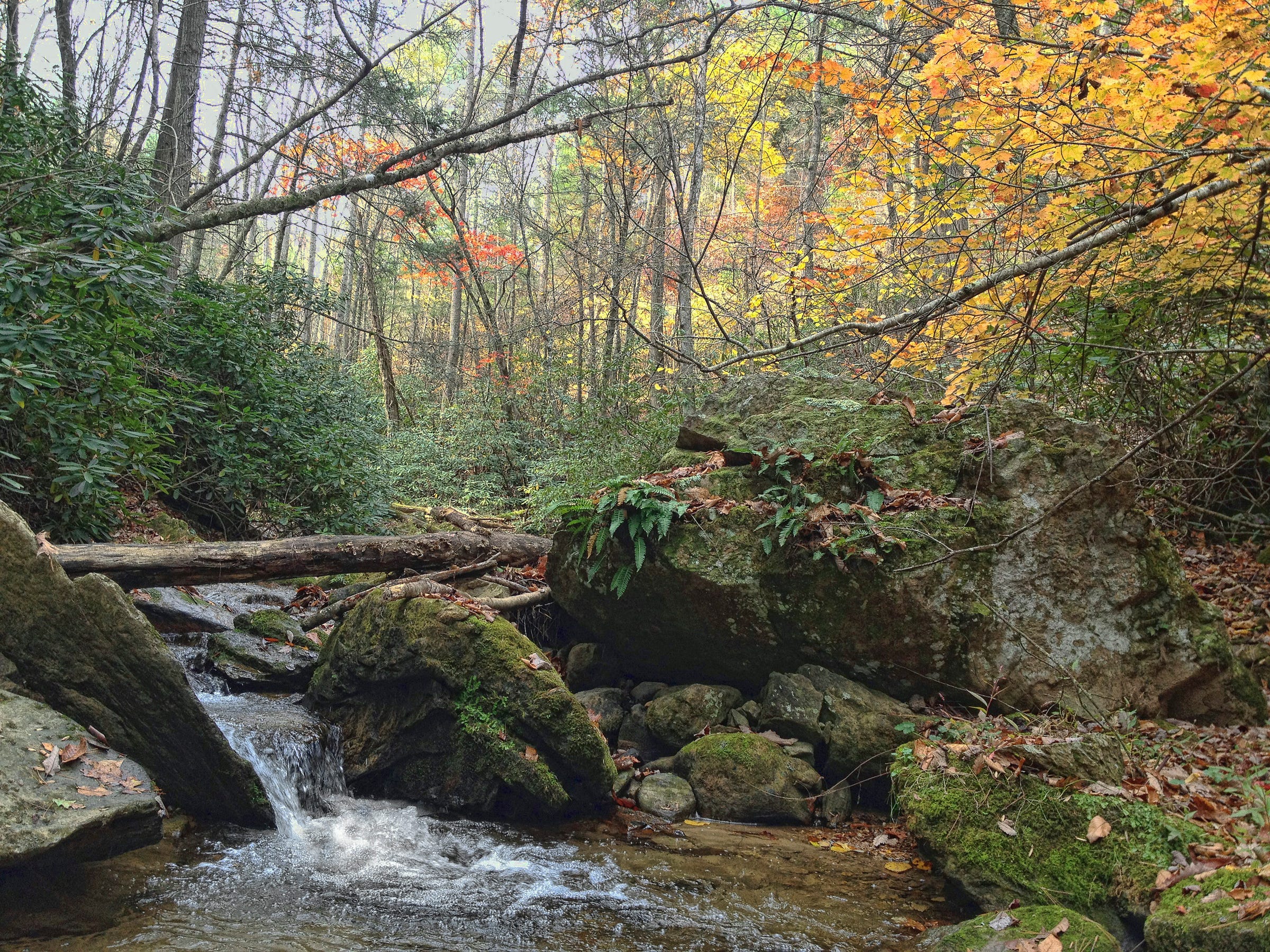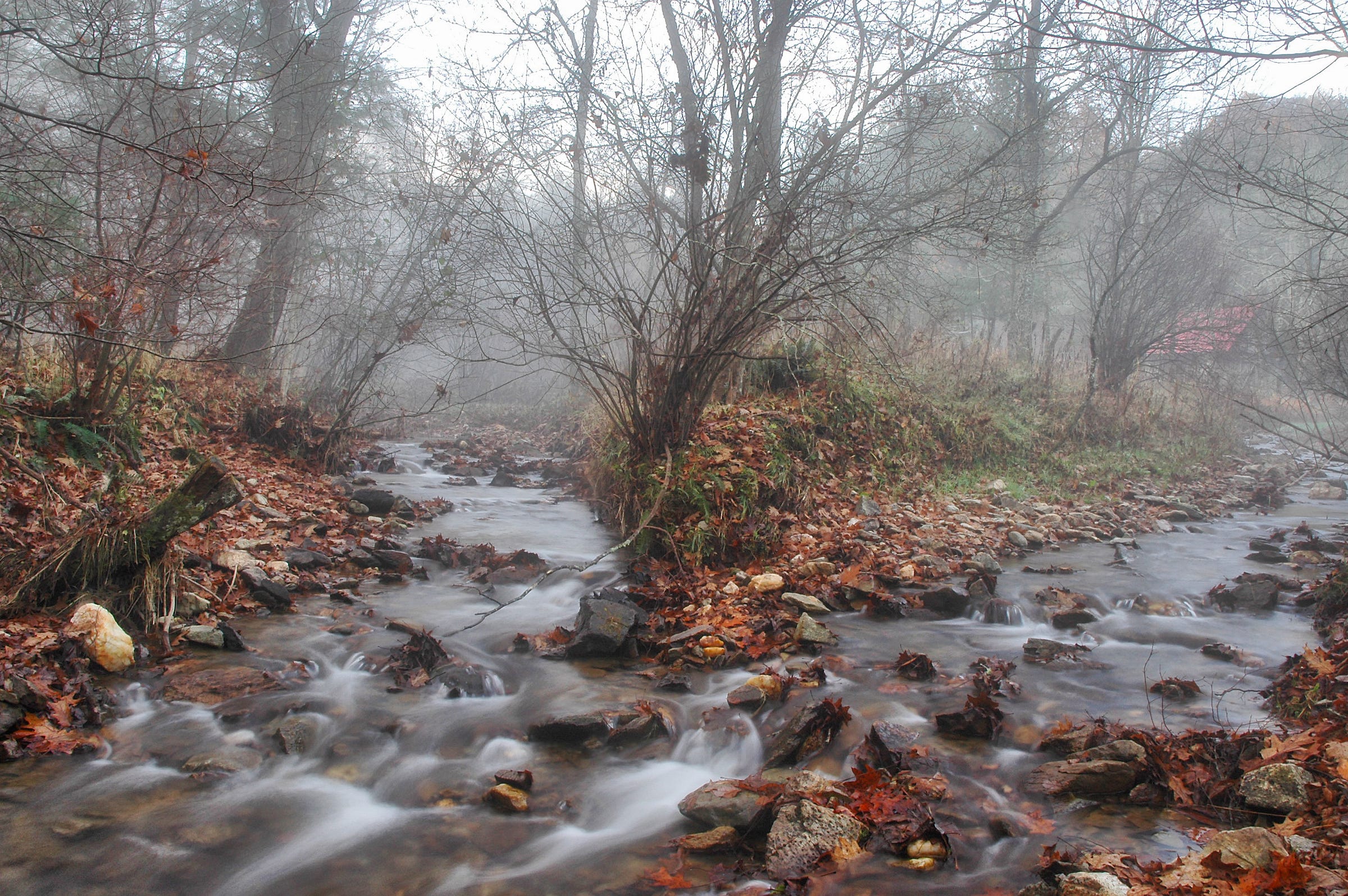This longer-than-usual piece was bound for “book three” that Covid extinguished. The working title was going to be “One Place Understood” with a dozen possible subtitles never decided upon. It would ideally have included images, much like this version. tldr: quickly view five images below.

We discovered the downed maple on our morning walk a day or two after it fell. The early summer leaves had barely wilted. The roots had finally lost their grasp and the large living tree had come down across the valley path at the very bottom of the gorge. From its size I guessed it had started from a maple whirly-gig seed about the same time I was a sprout myself.
Ann and I stood with our hats in our hands that morning in the light-filled clearing that the missing crown had opened to the sky. We marveled at the size of it, the reach of its branches. We felt obliged to be silent; reverent. A big tree from a familiar landscape on the ground in human-space is sobering and startling—like seeing a familiar skyscraper or silo from your childhood skyline suddenly lying massive and unnatural on its side.
This particular sugar maple, rooted precariously in the steep, rocky ravine, fell most likely during gusty rainless afternoon winds—not an uncommon weather event for that time of year. The enormous upended bulk of it blocked the narrow valley in a barricade of branches.

Some of its living leaves on uppermost supple twigs were submerged, the tree’s former top lying in what water remained in Nameless Creek during the recent drought. We watched the fallen tree daily over a week as those leaves withered at last, went black and crisp, and fell away in a premature final Autumn for that sugar maple.
I brought the chainsaw to the road block every morning that first week to clear enough branches for step-over passage, so that we might continue to reach the upper gorge trail. I was happy for the excuse to heft the saw— alone in that sanctuary in the cool shade, reaping a windfall. It would warm us after it had dried, two winters into the future.
The better part of a cord came just from the tops, filling my truck bed three times over. Usually it’s the body wood you want for an all-night fire, and I got the part I was willing to lift and carry. But in part to avoid dulling my saw and another part the sheer weight of those would-be wet blocks, I left twenty feet of the branchless trunk, the root end still anchored above the New Road. The weight of it rested hard against the black rocks that form the old roadbed’s crude retaining wall.

NOTE: The “New Road” name was given to this narrow path by local residents in the 1920s when it was constructed by hand as a means of getting school children out of the valley to school in Check, and a postman on horseback down onto Goose Creek for deliveries. In some places this crude wall was still standing a dozen feet high.
I wasn’t surprised to confirm that this wood was wet and heavier by far than if I had dropped it in the winter. It would stay wet now. With the tree disconnected from its living tether and plumbing, the sap would no longer be pulled up into the green chemistry of leaves nor would it sink to the roots with the coming of the first hard freeze. The seventy-year-old tree’s life processes had ended. Mine would go on for the time being, for a few more winters, at least. So we’d best make good use of this gift fallen at our feet.
The sawdust flew in the cool of the mornings, wet and sticky and sweet-smelling. The heat of friction from the spinning chain made a soft cloud of maple-scented steam that rose into a shaft of filtered sun. I stopped more often than I needed to, less for rest than for the stillness. The intermittent silence was all the more welcome with the screaming, steaming saw silent now and then, resting on the soft ground beside the truck.
Knowing A Tree
A bond forms, man to tree, in the making of firewood. At the end of many steps in the process, you come to know the whole from its parts: Features of grain or color or form of a given tree’s stove lengths. Their place, soon visible in the chronology of the stacks behind the house connects a single piece of stove wood to its source, and that source to a time and place, to a smell and a feel of the air on your skin when you felled it, sectioned it, split it, stacked it, and carried a fragrant armload of it indoors at last to warm you on a raw and gray December day. After that many touches, it is an intimate affair.
I recognized this particular maple well when I fetched in a cart-load of it a good two years after it fell. We don’t have much sugar maple here in southwest Virginia, near the edge of its range, so the characteristic bark of the species alone made it stand out from the oak, hickory and cherry we burn. But more than that, I’d never seen a tree so heavily worked by sapsuckers.

Every stove length cut from the stoutest branches and trunk bore lines of regularly-spaced rounded-rectangular holes, rank above rank. Most holes had been plugged by tree scar tissue from past year’s wounds; but some were recent from the tree’s final year of making sap—the sugary liquid that was enjoyed by an early wave of spring insects, then the sapsuckers feeding on the feeders.
I am given to frequent dalliance and daydreams when fetching in the wood. Some of my most pleasant daydreams come at just such moments of idleness-while-busy. I hefted a two-year-old ten-pound stove length of dry sugar maple in my hands before tossing it in the cart. If I held my eyes just right, I told myself, there was more here than just a chunk of lifeless organic matter.
Here was story; a history; an ecology. From this one slab of firewood, considered and known in a moment’s reflection, volumes could be written even if only a few paragraphs would reach awareness and then vanish in a momentary pause from the work at hand.
A Forest Food Hub
What is the story of a single tree, falling in the forest, heard or unheard, seen, touched and considered? This one maple’s story had already become part of my own, here in our time together—while it stood and after it fell and all those nights it warmed me.
But it was not just me, not just humankind that had been in a relationship with this one senescent maple. The falling of this one living tree in a forest of trees sent off waves of consequence across this microcosmic universe along Goose Creek far greater than the proverbial flapping of butterfly wings.
This one tree, prepared for diner by the yellow-bellied sapsucker woodpeckers, surely served dozens of forest species as a food source. The phloem sap in the drilled sapsucker wells is as much as ten times higher in sugar content than the xylem wood we tap into for syrup in the late winter.
So no small wonder that ants, wasps, moths and bees had fed reliably over the decades on the weeping wounds of our now-fallen maple. So might have some three dozen bird species as well as squirrels and bats who came for dinner. For three score and ten, this tree was a reliable, known source of early-season essential sugars for a small zoo of varied mouthparts.
By far, the most intimate connection of sapsucker juice in the lives of other birds along Goose Creek is with the ruby-throated hummingbird. These tiny birds have been observed following the woodpeckers from tree to tree in the early pre-bloom season to feed on the “nectar” of maples.
The hummers will even fight off competitors (all birds except sapsuckers) in the same way they dive bomb each other as competing birds at our summer feeders in the back yard. (And by the way, it is thought that up to 1000 tree species are also drilled by sapsuckers, including grape vines. I have seen lines of holes on basswood and hemlock–back when we had hemlock. And that is another story.
So if the conspicuous lines of machine-gunned holes was not sufficient for me to recognize and honor this particular tree just before tossing it into the maw of the wood stove, the matt-black bark of it was unmistakable. Fungal spores of several species colonize the sugary sap (as they do the silver maple beyond the mailbox) and turn the bark a flat dull black.
Foresters are not happy to see “black bark” disease because it means the interior wood will likely show “bird peck” discoloration that mars the wood for furniture. Local bowl turners, on the other hand, are happy for the unusual decorations that add interest to their turnings.
And So it Goes
So over a couple of winters, we sent the heat of 70 maple summers up in sweet smoke, piece by piece, remembering the windfall that ended dinner for many of our neighbors but worked to our particular benefit and comfort.
And for nearly a decade, the remainder of the maple trunk resting on the rocks where it had fallen has gone slowly down to rot (yielding a splendid crop of Dryad’s Saddle). We walked along the gorge path most days, watching this continuing feast for another entire cast of characters—the fungi—whose story will wait for another day.
The years-long microbial return of dust to dust for this one particular maple is one of the imperceptible movements that I watch through the filters of my TIME MACHINE’s lens from my sit spot, where I wait and wonder through this tiny window onto the world that we call home.
Where have all the maples gone, long time passing? Gone to fungus, every one.

 – Fred First is an author, naturalist, photographer watching Nature under siege since the first Earth Day. Cautiously hopeful. Writing to think it through. Thanks for joining me.
– Fred First is an author, naturalist, photographer watching Nature under siege since the first Earth Day. Cautiously hopeful. Writing to think it through. Thanks for joining me.
